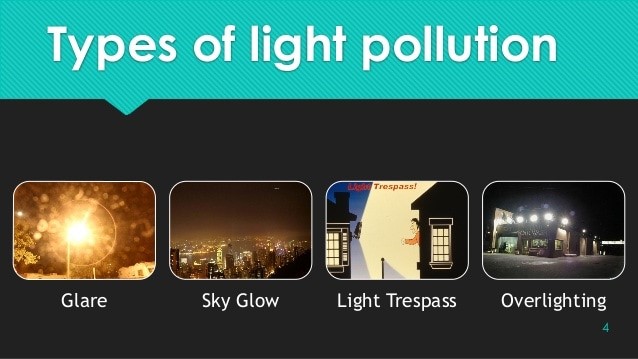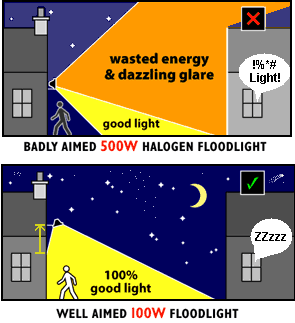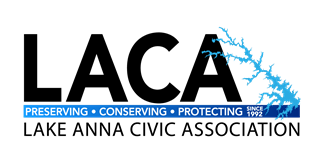By Sue Biondi – January 2023
There is a new development proposed at the lake, so in “light” of that development, I thought I would resurrect an article I wrote several years ago about light pollution around the lake. The impact of the lighting in and around this development, as well as private home lighting, will be quite detrimental to the area in many ways.
When you decided to light up the pathways to your home, light up the surrounding trees and place floodlights on and around your home and dock, did you take a moment to consider how those lights will impact the surrounding nighttime environment? Were you disappointed when, in the city, you were unable to see the stars, galaxies or even the Milky Way? You tried to see the shooting stars that the weatherman said would be occurring that evening and through the night, but never saw even one. How could this be, you asked. Oh, it must be all the city lights. Then, you came to the lake. You went out at night and saw a million, gazillion stars, even the Milky Way. You saw so many shooting stars you lost count. Now, let’s go back and consider the lights at the development and the ones you installed around your house and dock.
According to Wikipedia, “Light pollution, also known as photo pollution, is the presence of anthropogenic (resulting from the influence of human beings on nature) light in the night environment. It is exacerbated by excessive, misdirected or obtrusive uses of light, but even carefully used light fundamentally alters natural conditions.  As a major side-effect of urbanization, it is blamed for compromising health, disrupting ecosystems and spoiling aesthetic environments.” Various categories of light pollution are light trespass, over-illumination, glare, light clutter and skyglow. Sometimes, these categories may overlap one another. Living in a very rural area, outdoor lighting usually occurs via streetlamps as a sole source of lighting roadways, and the need for outdoor lighting is minimal or non-existent, except for the occasional front door lamp.
As a major side-effect of urbanization, it is blamed for compromising health, disrupting ecosystems and spoiling aesthetic environments.” Various categories of light pollution are light trespass, over-illumination, glare, light clutter and skyglow. Sometimes, these categories may overlap one another. Living in a very rural area, outdoor lighting usually occurs via streetlamps as a sole source of lighting roadways, and the need for outdoor lighting is minimal or non-existent, except for the occasional front door lamp.
Light trespass occurs when light from one source enters another’s property and disturbs the darkness of one’s neighbor. At times, this may cause sleep deprivation due to a disruption of the body’s circadian rhythm.  Several cities have developed standards to protect citizens against light trespass. Light trespass can be reduced or eliminated by selecting lighting fixtures which limit the amount of light and redirecting light away from neighbor’s property.
Several cities have developed standards to protect citizens against light trespass. Light trespass can be reduced or eliminated by selecting lighting fixtures which limit the amount of light and redirecting light away from neighbor’s property.
Over-illumination from commercial, industrial and residential sources uses approximately four or five million barrels of oil per day. About 30-60% of energy consumed in lighting is unneeded or frivolous.
Glare is created by light that shines horizontally and comes in varying types: An example of blinding glare is staring at the sun, which may cause temporary or permanent vision deficiencies. Disability glare happens when oncoming car lights temporarily blind a driver. Or light within fog that scatters and does not allow for contrast of objects. Discomfort glare occurs on a bright day where sunglasses are needed for comfort and less eye irritation.
Light Clutter is a form of light pollution that is excessive and inappropriate artificial light, also known as “clutter.” It includes bright, confusing and excessive groupings of light sources, commonly found in over-lit urban areas. Examples are overly lit office buildings, shopping malls, highway signs and sports stadiums. This type of lighting may have a harmful effect on motorists as well as aviation, causing confusion for pilots and vehicle accidents.
The effect of light on ecosystems is profound. It poses a serious threat to nocturnal wildlife and has a negative impact on plant and animal physiology. It can confuse animal navigation, alter competitive interactions, change predator-prey relations and cause physiological harm. The rhythm of life is orchestrated by the nature patterns of light and dark, so interruption to these patterns impacts the ecological dynamics.
Light pollution around lakes prevents zooplankton, such as Daphnia, from eating surface algae, causing algal blooms that can kill off the lakes’ plants and lower water quality. Daphnia normally dwell deep below the water in the day and ascend to the surface at night to feast on algae. Darkness triggers the migration to the surface. Nighttime lighting can prevent the zooplankton from floating up to their meals, which could lead to algae blooms that overwhelm the other life in the lake.
Astronomy is very sensitive to light pollution. Skies viewed in the city are significantly different from skies viewed in a dark environment. Skyglow (the scattering of light in the atmosphere) reduces the contrast between stars and galaxies and the sky itself, making it much rarer to see fainter objects. Skyglow is the bright halo that appears over urban areas at night, a product of light being scattered by water droplets or particles in the air.
Insects flying around the porch light distracts them from feeding, finding mates, or producing offspring. It is recommended to use a warm colored LED light, which attracts fewer insects. They also scatter less intense light into the atmosphere than blue LED lights.
The population around the lake is increasing, with new homes and developments emerging at a rapid rate. This article should serve as a reminder to all to consider your neighbors, the environment and the impact of lighting up the night sky. On a clear night, venture outside, look up and enjoy the light show that Mother Nature has provided for us. That should encourage you to turn off the lights.
sue.biondi@lakeannavirginia.org
